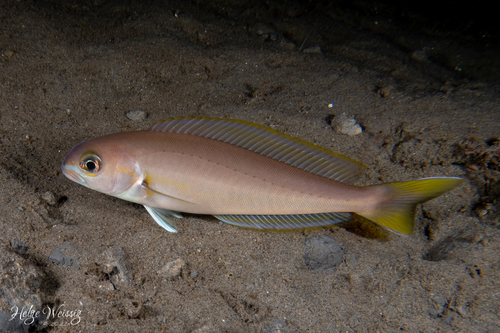
Ocean Whitefish
The Atlantic Bluefin Tuna (Thunnus thynnus) is a highly migratory, large pelagic fish renowned for its size, speed, and commercial value. It's a top predator in the marine ecosystem, playing a vital role in maintaining oceanic balance. This species faces significant conservation challenges.
4 13 years
Lifespan
102 cm
Length
Least Concern
Conservation Status
Carnivorous
Diet
Local Migration
Migration
Appearance Overview
The Atlantic Bluefin Tuna is a large, torpedo-shaped fish with a metallic blue back and a silvery-white belly.
Coloration
Dark metallic blue on top, silvery-white underside
Fins
Two dorsal fins, the first depressible; small finlets run down the back and belly to the tail
Body Shape
Torpedo-shaped, streamlined for speed
Length
Up to 13 feet (4 meters)
Weight
Up to 2,000 lbs (907 kg)
Diet
Carnivorous, feeding on a variety of fish, squid, crustaceans, and eels.
Feeding Behavior
Highly active predator, using speed and agility to hunt. Often feeds cooperatively, herding prey into tight groups.
Social Behavior
Forms large schools, especially during spawning season. Highly migratory, capable of crossing entire oceans.
Commercial Relevance
Extremely high value, especially in sushi and sashimi markets, where individual fish can fetch hundreds of thousands of dollars.
Conservation measures
Subject to international fishing quotas and management plans. Marine protected areas and fishing gear restrictions are also in place.
Status
Endangered (IUCN)
Threats
Overfishing is the primary threat. Other threats include bycatch in fishing gear and habitat degradation.
Habitat Distribution
Depth Range
0-1,000 meters (0-3,280 feet), though they are most commonly found in surface waters.
Geographic Range
Atlantic Ocean, including the Mediterranean Sea, Gulf of Mexico, and North Atlantic waters.
Preferred Environment
Pelagic, open ocean environments. Prefers temperate waters but can tolerate a wide range of temperatures.
Reproduction and Life Cycle
Breeding Habits
Spawns in warm waters, primarily in the Mediterranean Sea and the Gulf of Mexico. Spawning occurs in large aggregations.
Development Stages
Eggs hatch into larvae, which develop rapidly in plankton-rich waters. Juveniles grow quickly, eventually reaching impressive sizes.
Fecundity
Highly fecund; females can produce up to 30 million eggs per spawning season.
Maturity Age
Reaches sexual maturity between 4-8 years of age.
Faqs about Ocean Whitefish
How fast can Atlantic Bluefin Tuna swim?
Atlantic Bluefin Tuna are among the fastest fish in the ocean, capable of bursts of speed up to 40-60 mph.
How long do Atlantic Bluefin Tuna live?
They can live up to 40 years, though many don't reach this age due to fishing pressure.
Do Atlantic Bluefin Tuna migrate?
Yes, they are highly migratory and can travel thousands of miles across oceans.
Where are Atlantic Bluefin Tuna found?
They are primarily found in the Atlantic Ocean, ranging from the Mediterranean Sea to the Gulf of Mexico.
Are Atlantic Bluefin Tuna warm-blooded?
They are warm-blooded, which allows them to maintain a higher body temperature than the surrounding water, aiding in their speed and endurance.
How many eggs do they lay?
Females can release millions of eggs per spawning season, though survival rates of eggs and larvae are low.
What do Atlantic Bluefin Tuna eat?
They feed on a variety of fish, squid, crustaceans, and other marine animals.
Why are they such fast swimmers?
Their large size, powerful muscles, and streamlined bodies make them apex predators.
Why are they endangered?
Overfishing has severely depleted their populations, making them endangered.
When do they reach maturity?
They reach sexual maturity at around 4-8 years of age.
Copyright @ Nature Style Limited. All Rights Reserved.
 English
English